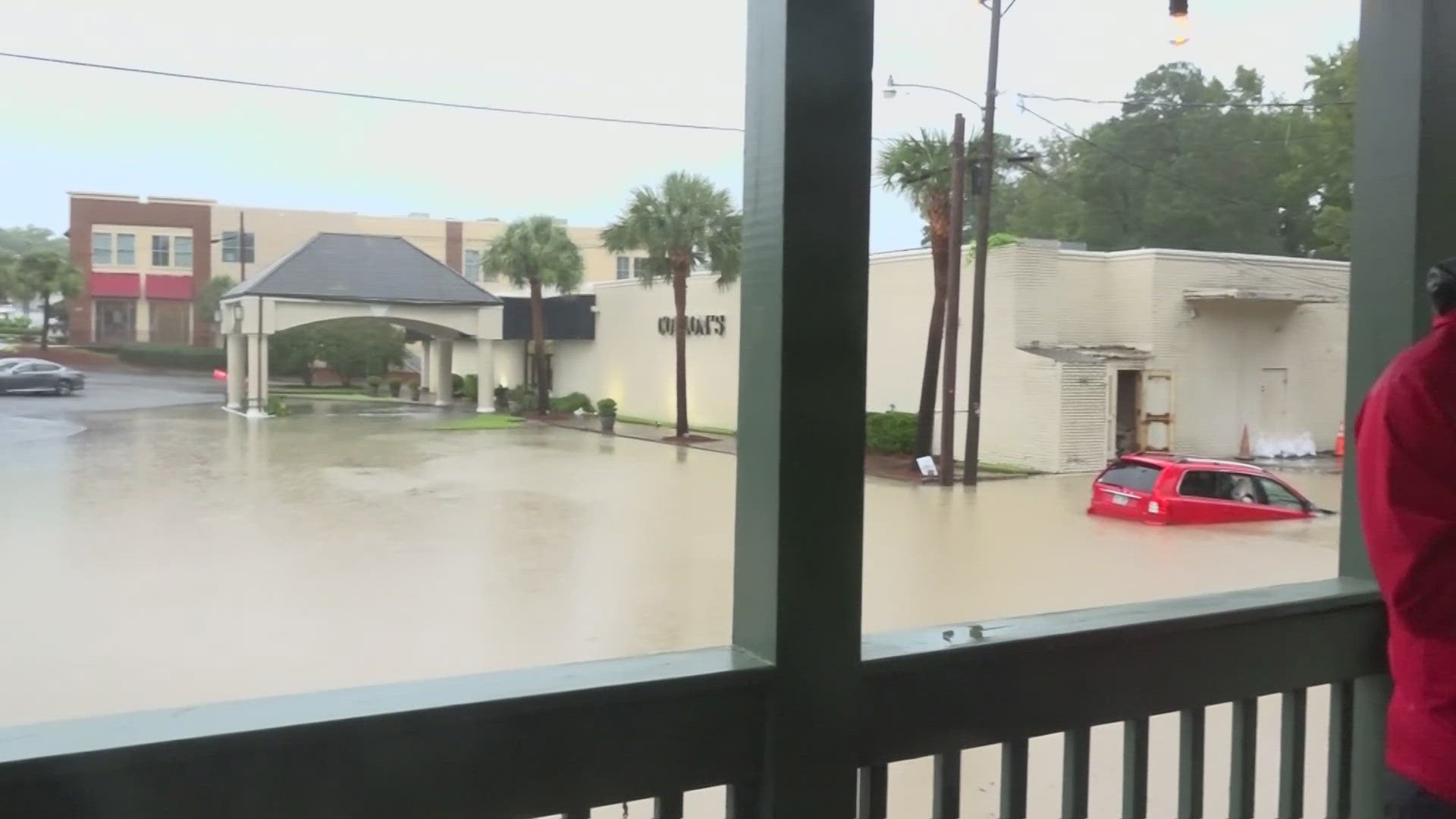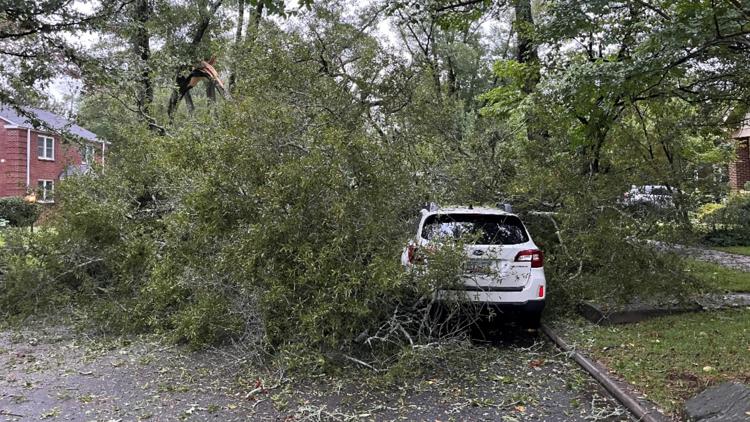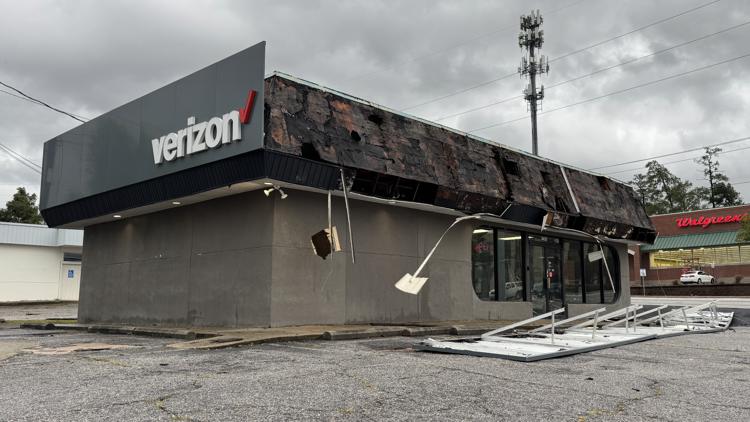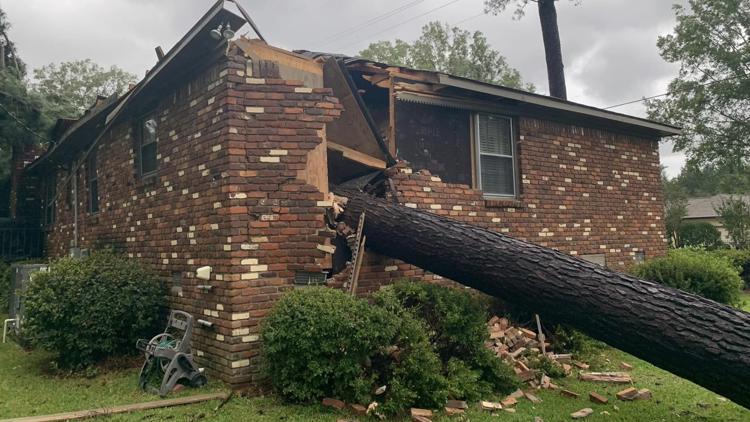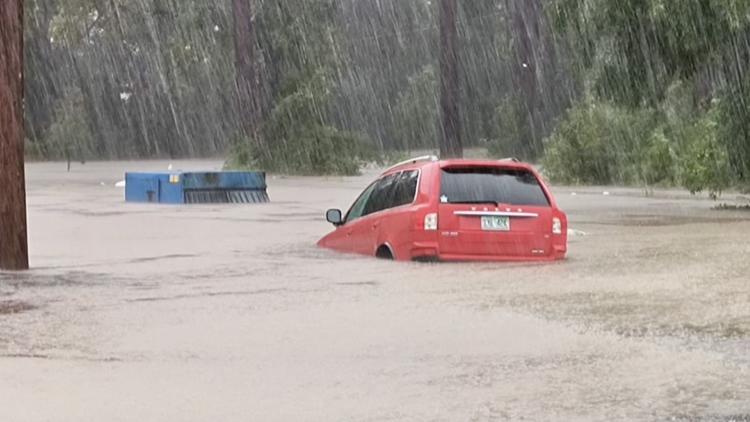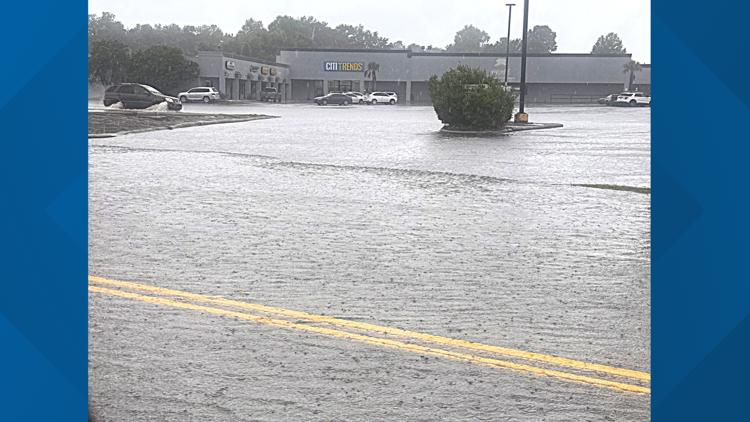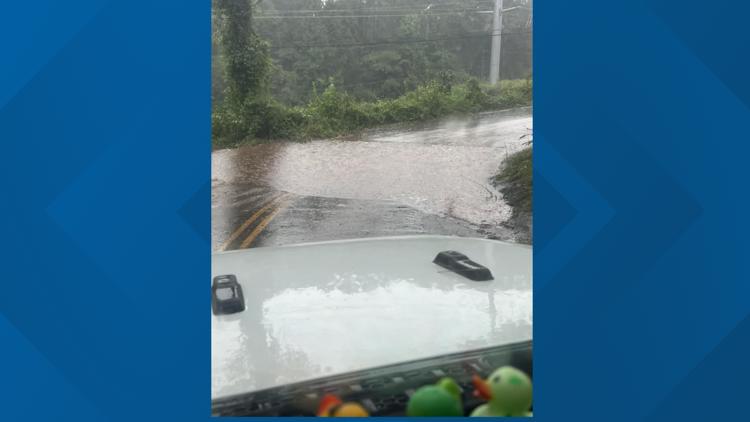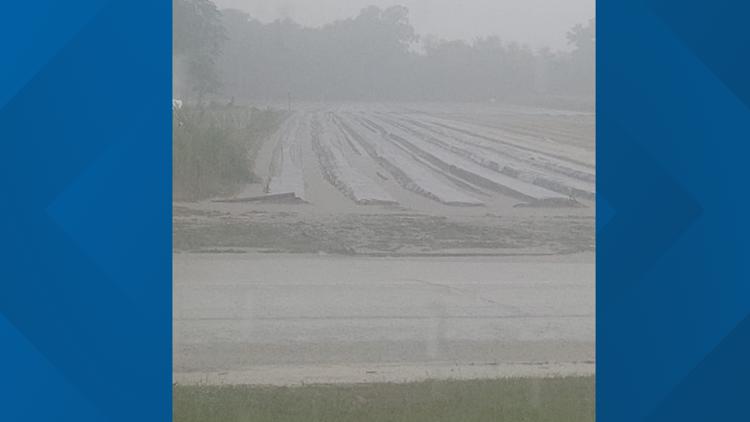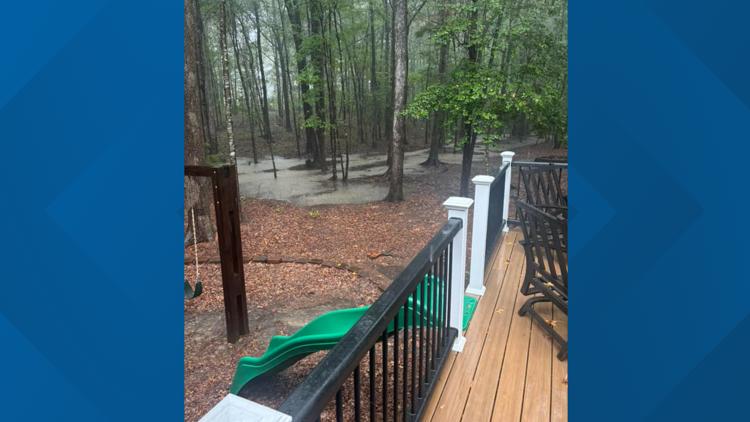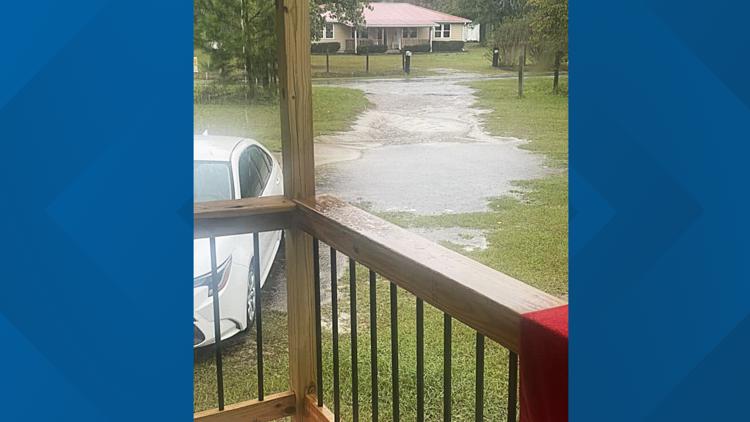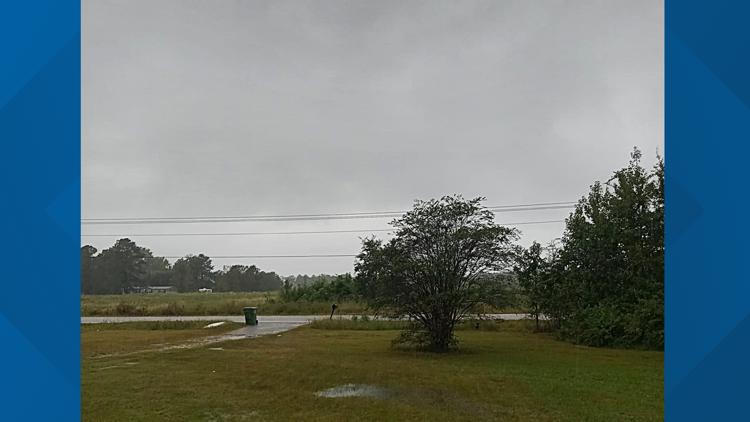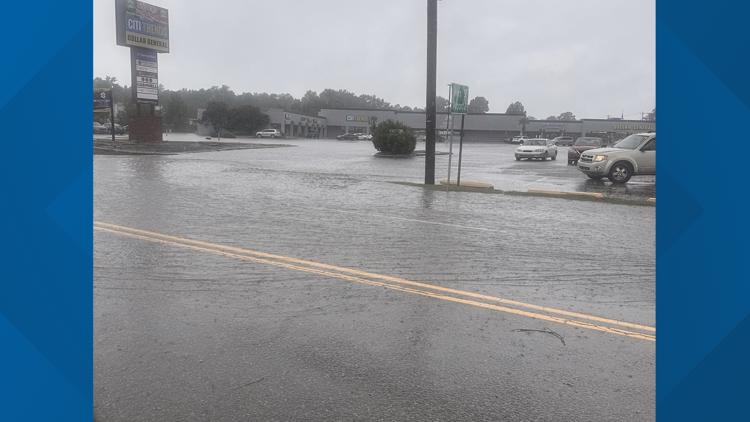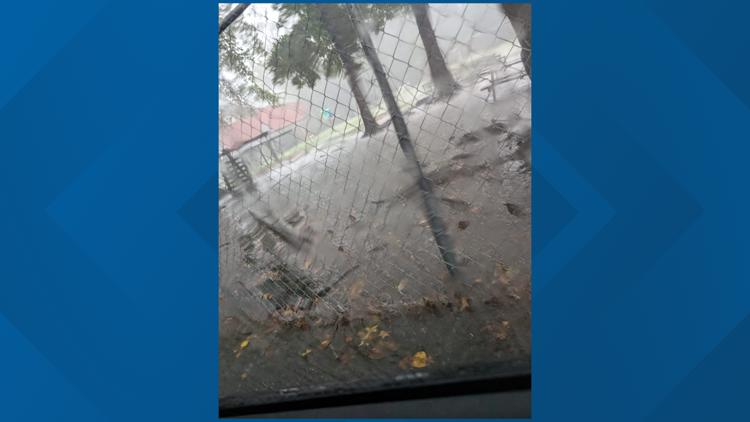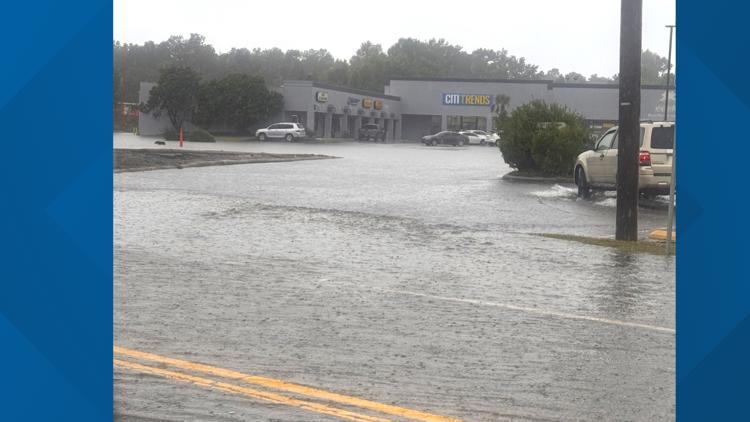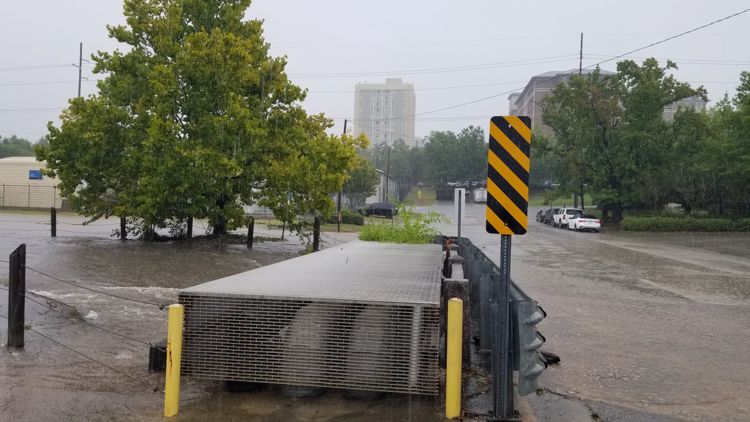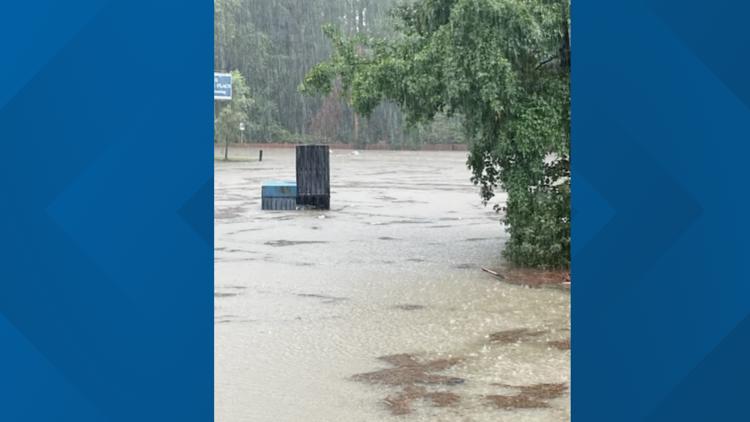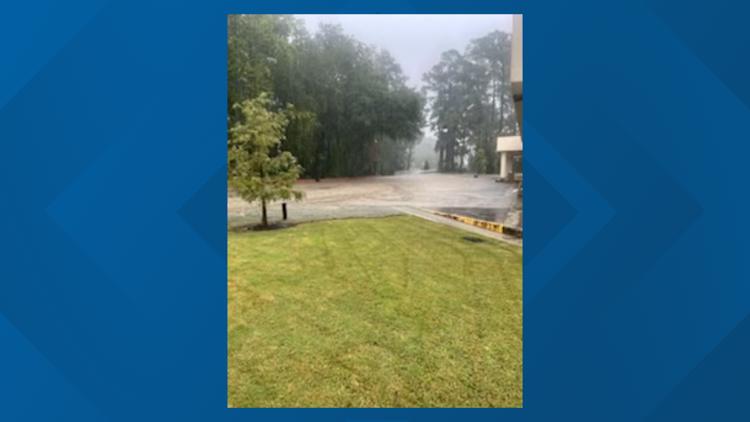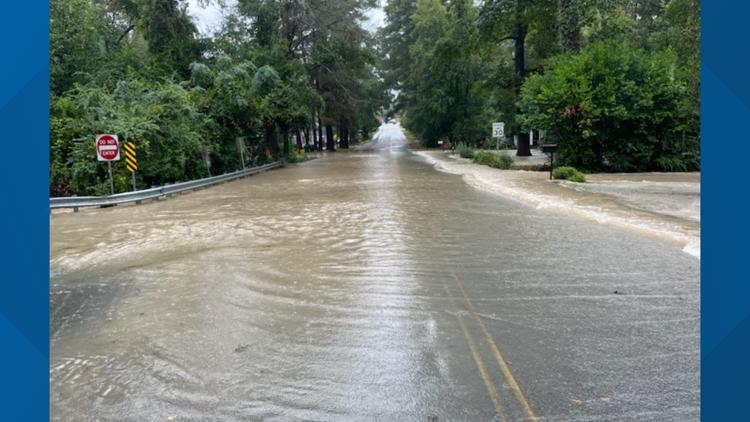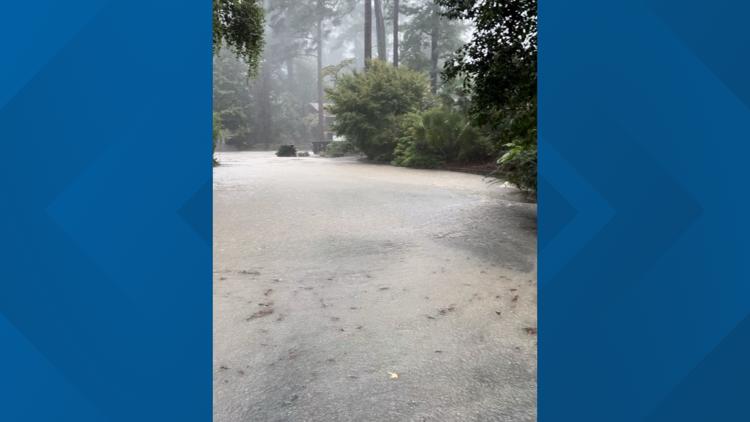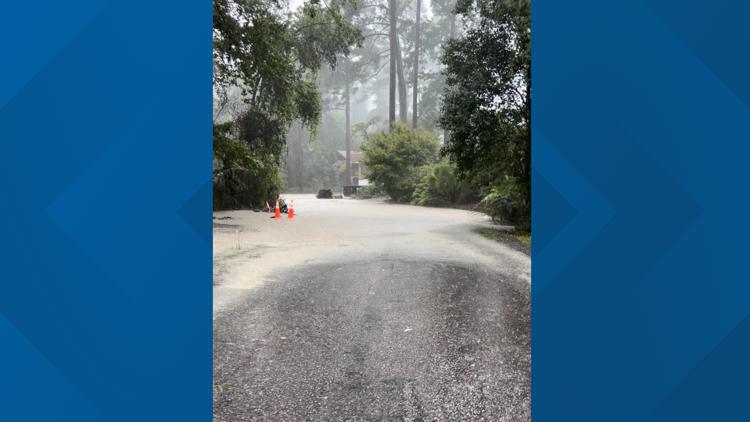COLUMBIA, S.C. — The bands of heavy rain from Hurricane Helene have caused significant street flooding throughout the Midlands, including around the Columbia area.
Reports have come in around the region of heavy rainfall, but some worst examples seem to have come from Richland County.
In Forest Acres, officials there said several major roads were blocked. One of those intersections was at Atascadero Road near Timmerman Road. Forest and Trenholm Road was also having flooding issues as well as Gills Creek Memorial Park and Forest Lake Place.
Out of an abundance of caution, the South Carolina Department of Transportation closed the bridge over the Gills Creek due to rising water levels. Pictures from the scene showed water just below the bridge. SCDOT said the bridge will reopen once water levels get back down to a safe level.
Meanwhile, Columbia had to temporarily close portions of Whaley Street and South Main Street near the University of South Carolina campus due to flooding at Rocky Branch Creek.
Traffic also had to be re-routed at Blossom and Huger streets, leading to the closing of the Blossom Street Bridge. The South Carolina Department of Transportation (SCDOT) assisted in the effort to get the road back open.
Earlier, Columbia Fire rescued the driver of a vehicle that stalled out in flood waters on Key Road near Williams-Brice Stadium. The driver was uninjured, but motorists are reminded to turn around rather than try to drive through water covering the roadway.
Hurricane Helene weather hits the Midlands
News19 Weather forecasts heavy rains in the Columbia area through midday Friday.
The City of Columbia released a list of flood-prone intersections last year to warn drivers when heavy rains are expected.
The list included the intersections of:
- Main and Whaley streets
- Gervais and Laurens streets
- Blossom and Henderson streets
- Blossom and Saluda streets
- Harden Street and Santee Avenue
- Monroe and Maple streets
- Two Notch Road and Read Street
- Wheat Street and Amherst Avenue
- Adger Road and Devine Street
- Wheat and Sumter streets
- Wheat and Pickens streets
- Pickens, between Wheat and Greene streets
- Heyward and Ravenel streets
- Barnwell and Pendleton streets
- Harden and Read streets
- Harden and Calhoun streets
- Franklin and Marion streets
- Franklin and Sumter streets
- Columbia College Drive and North Main Street
- Bull and Laurel streets
Pickens Street is also included between Wheat and Green streets.
City officials said these areas are known to flood but added that this largely depends on storm strength, length of the storm, and location.
Residents can help lower the chance of a flood by not putting yard debris near drainage structures and calling the city if they see a blocked storm drain. Residents can contact the Columbia Public Works Street Division at 803-545-3780 during regular business hours or Customer Care at 803-545-3300 after 5 p.m. and on weekends. Trees down in the public right-of-way can be reported to the Forestry Division at 803-545-3860 during regular business hours or to Customer Care on nights and weekends.
Officials also remind drivers to be cautious during heavy rains. In particular, the city said not to attempt driving through flooded roads and intersections or to "turn around, don't drown."
"A vehicle caught in swiftly moving water can be swept away in a matter of seconds," the city's statement said. "Twelve inches of water can float a car or small SUV and 18 inches of water can carry away large vehicles."
Hidden hazards below flood waters may also include washouts, sharp objects, power lines and dangerous chemicals.
Drivers in heavy rains should also avoid storm-damaged areas and obstructions such as downed trees and power lines. They advise monitoring weather radio, local radio, and television for additional information on safe routes.

